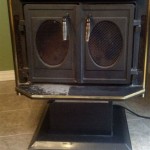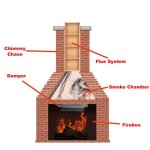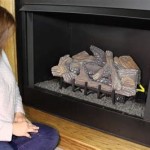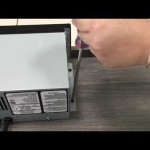Gas Fireplace Corner: Aesthetics, Efficiency, and Installation Considerations
A gas fireplace corner unit, often referred to as a corner gas fireplace, represents a sophisticated heating solution increasingly incorporated into contemporary residential designs. These units offer a unique blend of aesthetic appeal and efficient heating capabilities, maximizing space utilization while providing a visually striking focal point within a room. The selection, installation, and maintenance of a gas fireplace corner unit require careful consideration of several factors to ensure optimal performance, safety, and longevity.
The design of a corner gas fireplace is inherently advantageous for several reasons. Placing a fireplace in a corner creates a natural gathering space, improving the flow of social interaction within the room. This placement also frees up wall space that would otherwise be occupied by a traditional fireplace, offering greater flexibility in furniture arrangement and decorative options. Furthermore, the angle of the corner allows for a wider viewing area of the flames, enhancing the ambiance and visual impact of the fireplace.
Gas fireplaces operate using either natural gas or propane, offering convenience and ease of use compared to traditional wood-burning fireplaces. They typically feature a thermostat-controlled system, allowing for precise temperature regulation and consistent heat output. This feature eliminates the need for constant tending and adjustment, making them a practical choice for modern lifestyles. Moreover, gas fireplaces produce significantly fewer emissions than wood-burning fireplaces, contributing to improved air quality and environmental sustainability.
The selection process for a gas fireplace corner unit requires careful evaluation of several criteria, including the unit's heating capacity, style, safety features, and installation requirements. A thorough understanding of these factors will ensure that the chosen unit effectively meets the specific needs and preferences of the homeowner.
Heating Capacity and Efficiency
The heating capacity of a gas fireplace is measured in British Thermal Units (BTUs). The appropriate BTU rating for a given space depends on several factors, including the size of the room, the level of insulation, the climate, and the desired temperature. A fireplace with insufficient BTU output will struggle to effectively heat the space, while an oversized unit may lead to uncomfortable temperature fluctuations and energy waste.
Manufacturers typically provide BTU ratings for their gas fireplace models, along with recommendations for the corresponding room size. It is prudent to consult with a qualified HVAC professional to accurately assess the heating requirements of the specific space and determine the optimal BTU rating for the gas fireplace corner unit. This professional can also account for specific factors such as window placement, ceiling height, and the presence of drafts, ensuring that the chosen unit provides adequate and consistent heat throughout the room.
In addition to BTU rating, the efficiency of a gas fireplace is a crucial consideration. Efficiency is typically expressed as a percentage, indicating the proportion of fuel that is converted into usable heat. Higher efficiency ratings translate to lower fuel consumption and reduced energy costs. Look for gas fireplaces with high efficiency ratings, particularly those that are ENERGY STAR certified. These models meet stringent energy efficiency standards and can significantly reduce the long-term operating costs of the fireplace.
Direct-vent gas fireplaces are generally more efficient than vent-free models. Direct-vent fireplaces draw combustion air from outside the home and vent exhaust gases directly outdoors, preventing the loss of heated air from the room. Vent-free fireplaces, on the other hand, draw combustion air from the room and release exhaust gases into the room. While vent-free fireplaces can be easier to install, they are less efficient and may negatively impact indoor air quality.
Aesthetic Styles and Design Integration
Gas fireplace corner units are available in a wide variety of styles and designs to complement various interior design aesthetics. From traditional to contemporary, there are options to suit virtually any preference. Consider the overall style of the room and select a fireplace that seamlessly integrates with the existing décor.
Traditional gas fireplaces often feature ornate detailing, such as raised panels, decorative mantels, and realistic log sets. These models evoke the charm and elegance of traditional wood-burning fireplaces, while offering the convenience and efficiency of gas operation. Contemporary gas fireplaces, on the other hand, typically feature clean lines, minimalist designs, and modern materials such as glass and stainless steel. These models offer a sleek and sophisticated look, ideal for modern and minimalist spaces.
The flame presentation is another crucial aspect of the fireplace's aesthetic appeal. Some gas fireplaces feature realistic flickering flames that mimic the appearance of a wood fire, while others offer more stylized flame patterns. The choice of flame presentation is largely a matter of personal preference. Pay attention to the design of the burner and the arrangement of the logs or decorative media, as these factors significantly impact the overall appearance of the flames.
Furthermore, consider the surrounding materials and finishes. The fireplace can be integrated into a custom-built surround constructed from materials such as stone, brick, tile, or wood. The surround can be designed to complement the style of the fireplace and enhance the overall aesthetic appeal of the room. The selection of appropriate materials and finishes is essential for creating a cohesive and visually appealing focal point.
Installation and Safety Requirements
The installation of a gas fireplace corner unit is a complex process that requires specialized knowledge and expertise. It is imperative to hire a qualified and licensed professional to perform the installation to ensure proper and safe operation of the fireplace. Improper installation can lead to gas leaks, carbon monoxide poisoning, and other hazards.
Before installation, obtain all necessary permits and approvals from local building authorities. These permits ensure that the installation complies with all applicable building codes and safety regulations. The installation professional will typically handle the permit application process.
The installation process typically involves connecting the fireplace to a gas supply line, installing the venting system, and ensuring proper electrical connections. The venting system must be properly sized and installed to effectively remove exhaust gases from the home. Improper venting can lead to carbon monoxide buildup, which is a serious health hazard.
Gas fireplaces are equipped with several safety features, including a pilot light ignition system, a flame sensor, and a carbon monoxide detector. The pilot light ignition system ensures that the fireplace lights safely and reliably. The flame sensor monitors the presence of the flame and automatically shuts off the gas supply if the flame is extinguished. The carbon monoxide detector monitors the air for the presence of carbon monoxide and sounds an alarm if unsafe levels are detected.
Regular maintenance is essential for ensuring the safe and efficient operation of the gas fireplace. This includes inspecting the venting system for obstructions, cleaning the burner and log set, and checking the gas connections for leaks. The frequency of maintenance depends on the usage of the fireplace and the manufacturer's recommendations. It is advisable to schedule an annual inspection by a qualified service technician to ensure that the fireplace is operating safely and efficiently.
Adhering to all safety guidelines and manufacturer's instructions is paramount for preventing accidents and ensuring the long-term safety of the gas fireplace corner unit. Never attempt to modify or repair the fireplace without the assistance of a qualified professional. Always keep flammable materials away from the fireplace and ensure that the area around the fireplace is clear of obstructions.
Corner Gas Fireplaces Heatilator

18 Corner Orno Gas Log Burning Kiva Fireplace Kit Capo Fireside

Hearth Home Technologies Corner Gas Fireplace Fireside

Corner Ventless Gas Fireplace Visualhunt

Outdoor Lifestyle 36 Right Corner Direct Vent Multi Side Top Rear G Fireplaces Usa

The Corner Gas Fireplace A Great Way To Maximize Your Space

Empire Corner Cabinet Mantel With Base For Vfd26fp Fireplaces

110 Best Corner Gas Fireplace Ideas Design Remodel

Maximize Your Space With A Corner Gas Fireplace Aqua Rec S Fireside Hearth N Home

Chicago Corner 40re Designer Gas Fireplace Regency
Related Posts








